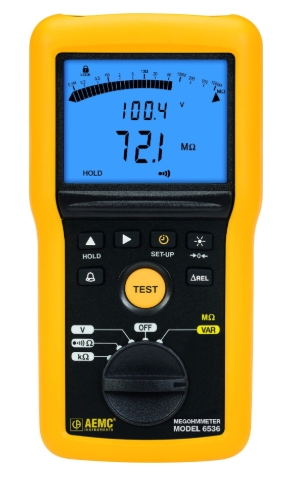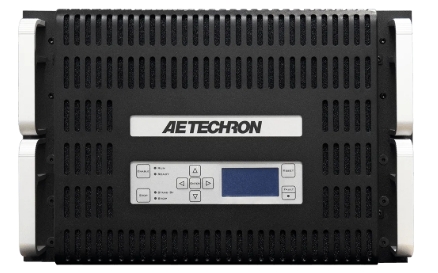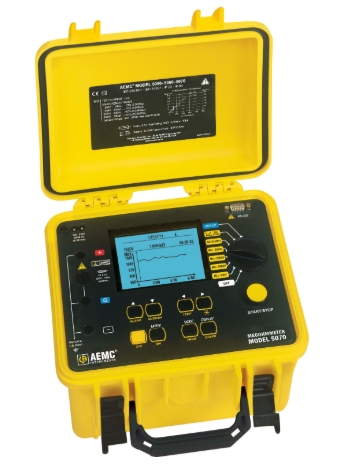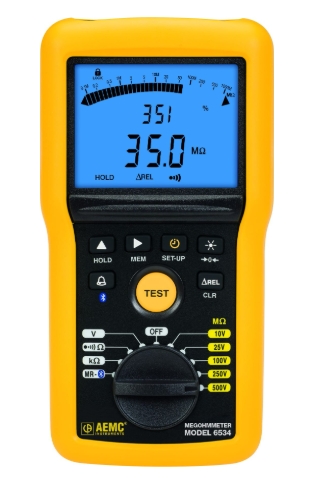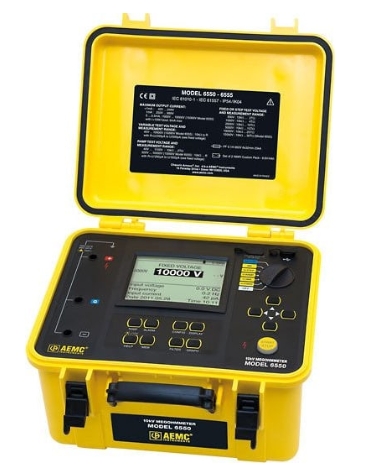Purchasing Office in USA!

For USA brands, Direct shipping from USA to worldwide destination!
Product Detail
AEMC L261 Simple Logger II
Category:
▶ AEMC
keyWord:
AEMC L261 Simple Logger II
Describe:
AEMC L261
Contact us
Description
http://www.jinstartech.com/
General Attributes:
AEMC L261 very good price
Simple Logger II Model L261 (1-Channel, TRMS, 600VAC/DC, DataView Software) - Catalog #: 2126.05
- TRMS voltage recording up to 600VAC/DC
- 64 samples per cycle
- Programmable storage rates from 8 every second to 1 every day
- 3 user-selectable storage modes
- Stores up to 240,000 measurements in non-volatile memory
- Powered by standard Alkaline batteries
- Lightweight, compact, fits anywhere
- LED indicators quickly and clearly display Logger status
- Includes DataView software for data storage, real-time waveform display, analysis and report generation
- Isolated USB communication
Description
- TRMS voltage recording up to 600VAC/DC
- 64 samples per cycle
- Programmable storage rates from 8 every second to 1 every day
- 3 user-selectable storage modes
- Stores up to 240,000 measurements in non-volatile memory
Simple Logger II (1-Channel, TRMS, 600VAC/DC, DataView Software)
The Simple Logger II Model L261 is a one-channel recording device powered by an alkaline battery pack. Line tracking is performed such that 64 samples over one line cycle are taken. Frequency tracking is performed over the range of ±2Hz around the nominal line frequency (50 or 60Hz). Harmonic measurements are calculated from these 64 samples (Harmonics are only available from the Simple Logger II Control Panel within the DataView software).
The Simple Logger II records TRMS at a rate of up to eight times per second. The measurement process is performed no more than eight times per second. TRMS calculations are performed on a single line cycle. This means that the input(s) are ignored between measurement intervals.
The main advantage of the logger is its ability to perform a variety of recording tasks with an easy and intuitive setup from a computer using DataView software.
Analog information on the input is sampled and converted to a digital signal. This digital signal is processed and stored along with scale and time information. An optically isolated Universal Serial Bus (USB) port provides for the transfer of data from the instrument’s internal memory to the computer for analysis.
Applications:
- Surge and Sag recording
- Long term supply monitoring
- Industrial, commercial, residential monitoring
- Monitor voltage harmonics
- Find intermittent voltage problems
- Machine monitoring
DataView Graphing & Analysis Software
The DataView software provides a convenient way to configure and control logging from your computer. Through the use of clear and easy-to-use tabbed dialog boxes, all Simple Logger II functions can be configured and tests can be initiated. Results can be displayed in real-time and stored in your PC or the logger. Standard or custom reports may be printed along with the operator’s comments and analysis.
Software Features
- Display and analyze real-time data on your PC
- Configure all Data Logger functions and parameters from your PC including sample rate, recording length, channel configuration, and more
- Select storage mode for optimum recording
- Zoom in and out and pan through sections of the graph to analyze the data
- Download, display, and analyze recorded data
- Display waveforms, trend graphs, harmonics (AC models), and text summaries, all in real-time
- Create custom views and reports
- Print reports using standard or custom templates you design
- Free software upgrades
3 Recording Modes
Start/Stop Mode
In this mode, the operator selects a storage rate from predefined values from 8 per second to 1 every day, then selects a start and stop time. Data is recorded at this rate until the memory is filled or the end recording time and date is reached. The logger then stops recording and goes into standby mode retaining the recorded date.
First In First Out Mode (FIFO)
The operator makes the data storage and recording length selections as described above. If the memory fills before the end date and time occurs, the logger will discard the oldest stored data point and add a new one. This process will continue until the end recording date and time is reached.
Extended Time Recording Mode (XRM)
This unique recording mechanism provides for continuous recording over a longer period of time without the need for the operator's selection of adjustments. The operator selects a starting storage range from predefined values from 8 per second to 1 every day and a recording length. The logger will store data at the rate selected until the memory is filled. The logger will then discard every other stored sample beyond the first one, freeing up half the memory for continuous recording. New samples will be stored at half the previous storage rate, matching the interval with the remaining stored data. This process will repeat each time the memory fills until the operator stops the recording manually, the end recording date and time is reached or the battery runs down.
Manufacturer Specs
| Simple Logger II Model L261 | |
| Electrical | |
| Channels | One |
| Input Connection | Two Recessed 4mm Banana Jacks |
| Measurement Range | 0 to 600V |
| Resolution | 0.1V |
| Accuracy (50/60Hz) | 0 to 5V: unspecified 5 to 50V: ± (0.5% of Reading + 1V) 50 to 600V: ± 0.5% of Reading + 0.5V) |
| Sample Rate | 64 samples/cycle |
| Storage Rate | Programmable from 125ms to 1 day |
| Storage Modes | Start/Stop, FIFO and Extended Recording Mode (XRM) |
| Recording Length | 15 minutes to 8 weeks, programmable using DataView |
| Memory | 240,000 measurements (512KB) - The recorded data is stored in non-volatile memory and will be retained even if the battery is low or removed. |
| Communication | USB 2.0 optically isolated |
| Power Source | 2 x 1.5V AA-cell alkaline batteries |
| Battery Life | 100 hours to >45 days (dependent on sample rate and recording length) |
| Mechanical | |
| Dimensions | 4.94 x 2.75 x 1.28" (125 x 70 x 32mm) |
| Weight (with battery) | 6.4 oz (181 grams) |
| Case | UL94-V0 |
| Vibration | IEC 68-2-6 (1.5mm, 10 to 55Hz) |
Related products
